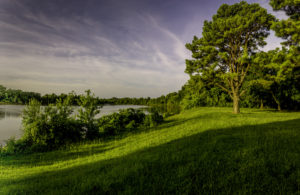Preparing a garden for the winter months can be a complicated task requiring a great deal of preparation. When you feel the first cool breeze and the trees begin to burst with bright hues, it is time to consider certain late fall gardening issues. While the weather remains gardener-friendly, it is important that approach the lawn by planting spring bulbs and maintaining trees and shrubs. It is also worthwhile considering building a compost bin and controlling the number of garden pests entering the area. This article will provide some top gardening tips and tricks for the late fall season.
Believe it or not, late fall is the best time to consider planting spring-flowering bulbs and prepare perennials for upcoming seasonal changes. Always keep in mind that bulbs continue to be divided and transplanted, even in milder climates; therefore, planting hardy bulbs before the soil freezes would be highly beneficial. Late-planted bulbs will develop roots in the spring and this will ensure that they bloom late, but by planting them in the late fall they should arrive on time in the next spring.
When planting perennials it is recommended that you position the bulbs at a suitable depth with their bottoms resting at a depth that is two times the bulb’s diameter. If the soil is well-drained or sandy, it would be useful to plant the bulbs an inch or two deeper to increase growth and discourage any rodents.
October or late fall is one of the best times to purchase trees and shrubs. At this point, trees will be presenting with their brightest colors and if you plant them now they will develop strong roots during the winter. Of course, it is important that the landscape is carefully planned; therefore, you should choose the trees and shrubs required for correct lawn coverage. An appropriate tree is one that will frame your home effectively and beautify the landscape making the garden an enjoyable area.
If you are unsure whether or not the tree or shrub is suitable for your lawn, try to visualize the tree at maturity. By picturing the tree’s shape and size, it is possible to determine if it will blend with the house and the overall plot. Trees that measure over thirty feet tall would be more suitable to a street side location instead of near decks or patios.

When purchasing trees, you will find that there are two basic types of trees available – the deciduous tree and the evergreen tree. A deciduous tree is a type of tree that frames areas with a cool canopy during summer and a colorful rack of leaves during fall. Evergreen trees, in contrast, provide dense green foliage throughout the year. This is why evergreen trees are perfect as backdrops for flowering shrubs.
Final Words
As can be seen, there are certain issues to consider when planning gardening for late fall. Using the information above can help you determine the correct trees and perennials required for your garden.
